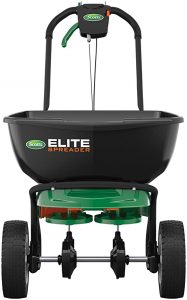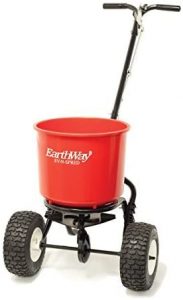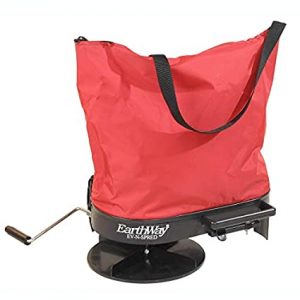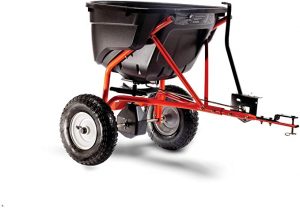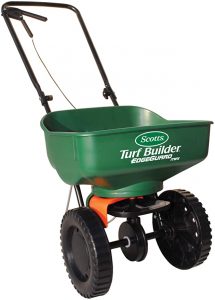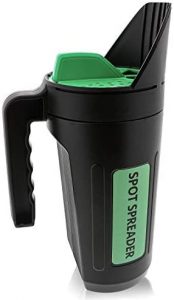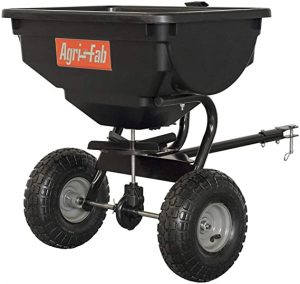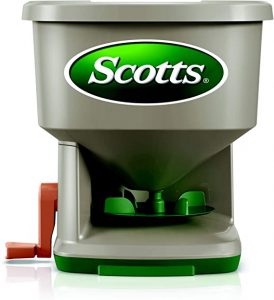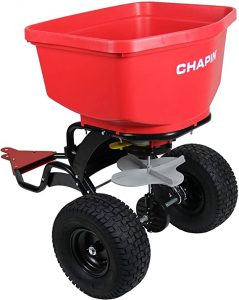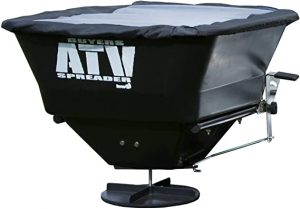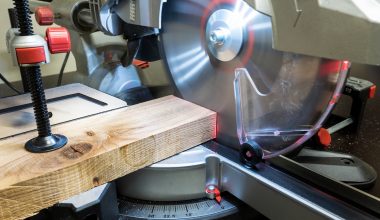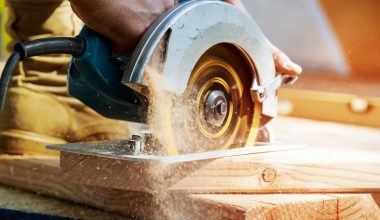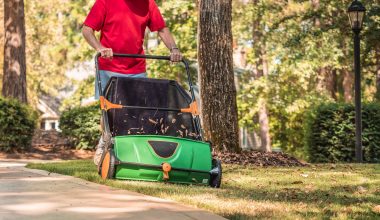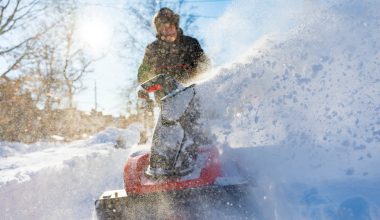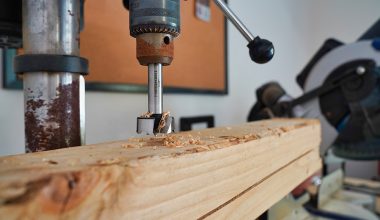Do you find yourself wondering why your lawn isn’t keeping up with the neighbors’? The difference might be in how you fertilize it. Whether you own a small patch of lawn or several acres, fertilizing by hand is neither quick nor easy. Instead, consider investing in a fertilizer spreader for the job.
Like the plants in your vegetable or flower garden, grass needs a range of key nutrients to thrive. Without these nutrients, your lawn can end up looking dull, patchy, and stunted. Using a fertilizer spreader is the best way to supplement your lawn’s soil and guarantee your grass grows as healthy and beautiful as possible.
Of course, no two fertilizer spreaders are the same. Some rely on a hand-crank or push-power to spread fertilizer across your lawn. Others require a motorized tractor or ATV to work.
So before you run out and buy the first fertilizer spreader you see, here’s what you need to know about these lawn care tools and how to choose the best model for your yard’s needs:
What to Look for in a Fertilizer Spreader
Distribution type
Fertilizer spreaders can be divided into two distribution types, and each one works best in specific circumstances.
Broadcast spreaders use a spinning disc underneath the hopper (the bin where fertilizer is stored) to evenly distribute fertilizer in all directions. This type of spreader works best when fertilizing large areas of open lawn but is pretty imprecise.
Drop spreaders do away with the spinning disc and instead distribute fertilizer onto the ground directly beneath the hopper. These spreaders are incredibly precise. But covering a large lawn will take quite a bit of time, and it’s easy to miss some sections entirely.
Propulsion
The most popular type of fertilizer spreader is called a push or walk-behind spreader. These spreaders feature handles and often look like small wheelbarrows.
Tow-behind fertilizer spreaders attach to a lawnmower or all-terrain vehicle (ATV) hitch. These spreaders are the ideal way to cover vast areas without much physical labor.
Handheld fertilizer spreaders come in all sizes and styles. Some rely on a hand-crank to distribute fertilizer as you walk. Others require you to shake out the lawn product by hand. Regardless of distribution style, these spreaders are an affordable solution for quick, ultra-precise fertilizer application.
Hopper capacity
Not all fertilizer spreaders feature hoppers of the same size. Typically, the larger the fertilizer spreader, the greater its hopper capacity.
It’s better to have a spreader with a capacity that’s too big than one that’s too small. Fertilizer spreaders with lower hopper capacities will need to be refilled often. If you have a large lawn, this can become tedious and make fertilizing more time-consuming than it needs to be.
Top 10 Best Fertilizer Spreaders
Best Overall
1. Scotts Elite Spreader
Top Features
Coverage: Up to 6 feet
Max. capacity: 20,000 square feet
All-terrain never-flat tires
Built-in smartphone holder
Optional Edgeguard setting for improved accuracy
Our Rating
Check Price
Our Take
The Scotts Elite Spreader is a great example of a top-of-the-line push spreader with just enough bells and whistles. This broadcast spreader is compatible with seed, fertilizer, weed killer, salt, and ice melt. Depending on the distribution settings, the hopper can hold up to 20,000 square feet of product.
Scotts claims this model is it’s most accurate yet with an extra-wide spread pattern of 6 feet. You can activate the built-in Edgeguard to block off the right half of the spread pattern. This makes fertilizing along your lawn’s border or landscape elements quick and mess-free.
The spreader’s foam-filled tires will never go flat. The ergonomic handle features a convenient smartphone holder for hands-free connectivity. However, the use of plastic rather than metal throughout the spreader’s design and known clogging issues ensure this spreader won’t be a lifetime investment. All in all, the Scotts Elite Spreader is a great option for homeowners with a large lawn who don’t want or need a heavy-duty fertilizer spreader.
Best For Small Lawns
2. EarthWay 2600APlus 40lb. Walk-Behind Broadcast Spreader
Top Features
Coverage: Up to 8 feet
Max. capacity: 5,000 square feet
Adjustable drop rate and Side Spread Control
Enclosed gearbox prevents blockages
Wide base for added stability
Our Rating
Check Price
Our Take
EarthWay leads the way in professional American-made lawn care products. The EarthWay Medium-Duty Estate Broadcast Spreader might be built for lightweight residential use, but it still includes key features seen in the company’s commercial-grade fertilizer spreaders.
This broadcast spreader leaves behind a feathered distribution area for more even coverage and zero lines. The adjustable drop rate and Side Spread Control setting also make it easy to treat narrow sections of the lawn. Large granules are no problem for this spreader, and the enclosed gearbox stops clogs before they happen. However, it seems to spread unevenly at lower settings.
The steel handle features an integrated control lever that connects to the spreader’s EV-N-SPRED 3-Hole Drop Shut-Off System. The handle height isn’t adjustable, and the unit doesn’t fold for storage. A wide, rust-proof chassis and 9-inch pneumatic tires offer extra stability on all terrain. If you’re willing to put in the time to assemble the EarthWay Medium-Duty Estate Broadcast Spreader, this is a great investment for a small lawn.
Best Handheld Fertilizer Spreader
3. EARTHWAY PRODUCTS 2750 Hand Crank Spreader
Top Features
Coverage: 12 feet
Max. capacity: 20 lb of product
Folds up for compact storage
Adjustable shoulder strap
Rocking agitator prevents jams
Our Rating
Check Price
Our Take
The EarthWay 25lb Nylon Bag Seeder/Spreader is the ideal tool for treating a small lawn or tackling rough, hilly terrain. Use this fertilizer spreader on its own or to supplement your existing push or tow-behind model.
The attached ballistic nylon bag offers enough structure to stand upright while filling the spreader with the product. The zippered opening prevents spills and keeps the lawn product inside dry. When not in use, fold the bag down for compact storage.
The EarthWay 25lb Nylon Bag Seeder/Spreader is different from most other handheld spreaders because it isn’t technically handheld. It features a supportive shoulder strap for easy carrying, even when the bag is completely full. The curved base is designed to fit comfortably against your hip. While the distribution area adjusts from 8 to 12 feet, you should plan to get covered with whatever product you’re spreading during use. Still, this handheld fertilizer spreader offers ease-of-use not found in competing models.
Best Tow Behind Spreader
4. Agri-Fab 45-0463 130-Pound Tow Behind Broadcast Spreader
Top Features
Coverage: Up to 12 feet
Max. capacity: 25,000 square feet
Compatible with almost all lawn tractor models
Enclosed commercial-grade gearbox for longevity
3-year limited warranty
Our Rating
Check Price
Our Take
Known for combining industrial quality with consumer accessibility, Agri-Fab is a leader in lawn care technology. The Agri-Fab 130 lb. Tow Broadcast Spreader is one of the company’s heftier options, backed by a 3-year limited warranty. The tow-behind hitch is nearly universal, but you should still double-check its compatibility with your own lawn tractor.
Aside from the impressive 12-foot distribution pattern, the Agri-Fab 130 lb. Tow Broadcast Spreader stands out because of its extra-large capacity hopper. The hopper holds up to 130 pounds of product for a maximum coverage area of 25,000 square feet per load.
Maneuvering the Agri-Fab 130 lb. Tow Broadcast Spreader is simple and stress-free thanks to its pneumatic tires. The fertilizer spreader’s on/off rod control is accessible from the tractor seat. For a spreader with a more durable all-metal design, however, consumers must look elsewhere. Overall, Agri-Fab delivers a great deal of convenience with this fertilizer spreader at a price most homeowners can afford.
5. Scotts 76121 Turf Builder EdgeGuard Mini Broadcast Spreader
Top Features
Coverage: Up to 5 feet
Max. capacity: 5,000 square feet
Compact, folding design for easy storage
Pre-calibrated and ready-to-use
Edgeguard Technology for use around driveways, sidewalks, and garden beds
Our Rating
Check Price
Our Take
If you’re yearning for the convenience of a push spreader but don’t have space for a full-size model, check out the Scotts Turf Builder EdgeGuard Mini Broadcast Spreader. This broadcast spreader is Scotts’ smallest available and features a fold-down handle for even more compact storage. Yet, it can still cover up to 5,000 square feet of lawn with one hopper load.
Despite its compact size, this fertilizer spreader still covers plenty of ground. The distribution area is 5 feet across, rivaling the spread pattern of most larger models. This miniature spreader also comes with Scotts Edgeguard Technology, which blocks off the right half of the broadcast spreader to maneuver around your driveway, home exterior, or landscaping structures.
The Scotts Turf Builder Edgeguard Mini Broadcast Spreader comes fully assembled and calibrated for immediate use. Unfortunately, there are still reports of uneven product distribution (and resultant streaking) when using the spreader on sloped areas. For the price, though, you really can’t find a better walk-behind spreader for small lawns.
6. Spot Spreader Hand Spreader Shaker
Top Features
Precise coverage without wasted product
Max. capacity: 80 oz of product
Adjustable opening with three hole sizes
Screw-off lid for filling
Ideal for spot treatments
Our Rating
Check Price
Our Take
Once upon a time, the makers of the Spot Spreader saw a gap in the fertilizer spreader market and chose to fill it. This handheld fertilizer spreader uses a simple shake distribution style. However, the durable construction and convenient features make this spreader so much more than a cup with a handle.
Built with strong, lightweight plastic, this handheld fertilizer spreader features three easily adjustable openings. These openings allow you to spread all different sizes of fertilizer, seed, weed killer, or ice melt without worrying about clogging the spreader. The Spot Spreader lid screws on and off for easy filling and holds up to 80 ounces of product at once.
You certainly don’t want to use the Spot Spreader to fertilize a full-size lawn. But this handheld spreader is perfect for quick spot treatments. Even with multiple openings, though, large granules like grass seed can jam up the adjustable dial. Overall, the Spot Spreader is great for small projects like salting pathways or fertilizing a patch of lawn.
7. Agri-Fab 85 lb. Tow Broadcast Spreader
Top Features
Coverage: Up to 10 feet
Max. capacity: 14,000 square feet
Enclosed gearbox design
3-year manufacturer’s warranty
Universal hitch pin compatible with all tractors
Our Rating
Check Price
Our Take
Tow-behind fertilizer spreaders are the most convenient option out there, and you don’t need a multi-acre lawn to justify owning one yourself. The Agri-Fab 85 lb. Tow Spreader is a compact version of the brand’s popular large-capacity spreaders designed to cover up to 14,000 square feet (or a quarter acre) at once.
This tow-behind fertilizer spreader is lightweight and can be used with seed, fertilizer, weed killer, salt, and ice melt for year-round versatility. It boasts a distribution area up to 10 feet wide. The enclosed metal gearbox offers added durability, while the 10-inch pneumatic tires deliver smooth maneuverability.
No need to worry about compatibility, as the universal hitch pin fits all lawn tractor models. The Agri-Fab 85 lb. Tow Spreader also features a convenient on/off control cable usable from your lawn tractor seat. Achieving the correct distribution rate isn’t easy, and product tends to pour out of the hopper when bringing the fertilizer spreader to a stop. If you keep an eye on the drop rate during use, though, this spreader is an excellent alternative to more labor-intensive push models.
8. Scotts Whirl Hand-Powered Spreader
Top Features
Quick, adjustable coverage for small lawns
Max. capacity: 1,500 square feet
Compatible with seed, fertilizer, weed killer, ice melt, and salt
Clog-free design
Adjustable arm support prevents muscle strain
Our Rating
Check Price
Our Take
The Scotts Whirl Hand-Powered Spreader is the perfect solution for homeowners looking to make their small lawn look it’s absolute best. Or for anyone looking to spot-treat with fertilizer, grass seed, or weed killer. Some even use this hand spreader to distribute small flower seeds.
The Scotts Whirl Hand-Powered Spreader holds up to 1,500 square feet of product. This spreader doesn’t cover a specific area. Instead, the broadcast range depends on how quickly the crank is turned. The handle includes an attached armrest for added support and comfort during use.
While the distribution area is controlled by the speed of the hand crank, this handheld spreader is a bit messier than other types — wear protective clothing and avoid using the spreader on windy days. Not all granules fit the hopper and broadcast mechanism, including some products made by Scotts. For small projects throughout the year, though, this handheld fertilizer spreader is incredibly easy to pick up and stow away as needed.
9. Chapin International 8620B 150 lb Tow Behind Spreader
Top Features
Coverage: Up to 15 feet
Max. capacity: 150 lb of product
Compatible with most residential lawn tractors
Auto-stop feature for zero mess
Hopper cover included
Our Rating
Check Price
Our Take
With over 100 years of lawn care expertise under its belt, Chapin knows a thing or two about making high-quality fertilizer spreaders. The Chapin 8620B 150-Pound Tow Behind Spreader is designed to attach to any standard lawnmower hitch for hands-free fertilizing, seeding, or weeding.
Along with a high-capacity hopper, this tow-behind fertilizer spreader includes an auto-stop feature, so there’s no need to mess with an extra lever or handle while driving. The broadcast mechanism features 11 incremental settings, making it easy to calibrate and find the perfect one for any project. With extra-wide 14-inch pneumatic tires, this spreader can handle hills and rough terrain without issue.
While the hitch will fit nearly any residential lawn tractor, it might be too narrow to fit larger tractors. The Chapin 8260B 150-Pound Tow Behind Spreader also lacks any directional controls, which can make distributing granules along a sidewalk or garden bed quite difficult. Ultimately, this is a great tow-behind broadcast spreader for covering tons of open land without too much trouble.
10. Buyers Products ATVS100 ATV All-Purpose Broadcast
Top Features
Coverage: Up to 30 feet
Max. capacity: 2,700 cubic feet
Easily mounts to ATV utility rack
Controls accessed from ATV seat
Protective hopper cover included
Our Rating
Check Price
Our Take
The Buyers Products ATV All Purpose Spreader is probably unlike any other tow-behind fertilizer spreader you’ve seen. In fact, you don’t even tow this spreader. Instead, it mounts to the rear utility rack of an ATV without the use of a hitch or wheels.
The adjustable broadcast spreader can distribute product over an area of 5 feet to 30 feet. The hopper holds up to 100 pounds of fertilizer, seed, weed killer, salt, or livestock feed. A hopper cover is included to protect granules from rain, snow, and wind during use.
Key controls are accessible from the ATV seat, including the spreader’s power switch and manual regulator. However, while technically doable, adjusting the spreader’s settings is difficult without leaving the ATV driver’s seat. The feed gate is also prone to bending and breaking with routine use. While great in theory, most users should expect to make their own adjustments/repairs to get the most from this ATV-mounted fertilizer spreader.
Ultimate Fertilizer Spreader Buyer’s Guide
Owning a high-quality fertilizer spreader is just the first step to a healthy, beautiful lawn. Here’s everything you need to know to get the most from your new lawn care equipment:
Understanding Your Spreader Settings
Nearly all fertilizer spreaders come with different settings to suit various lawn products and application scenarios. Failing to pay attention to these settings is almost guaranteed to leave you with an under- or over-fertilized lawn.
Before spreading any fertilizer or weed killer, find the correct setting by referencing the product’s packaging. If you can’t find the recommended setting for a particular product, perform a calibration test to determine the right distribution rate.
How to Calibrate Your Fertilizer Spreader for Accurate Application
One of the biggest mistakes a new fertilizer spreader owner can make is to not calibrate their equipment properly. This is especially important if your spreader is older and the rate of application has changed. By calibrating your spreader, you can ensure that product granules are applied to your lawn at the correct rate.
Most spreaders come pre-calibrated for popular lawn products. If your spreader lacks a specific setting for your chosen granules, calibrating can help you determine which setting to use.
The simplest way to calibrate a fertilizer spreader is to cross-reference the chart that comes with your chosen fertilizer, weed killer, or seed product against a small sample area.
Here’s a simple, step-by-step guide to calibrating your fertilizer spreader:
- Find the coverage in square feet for your bag of lawn product. Divide 100 by the number of square feet
- Multiply the resulting number by the weight of the bag in pounds. Measure out this number in pounds from the bag and load your spreader hopper.
- Measure and mark a 10-by-10 foot area of lawn.
- Apply the lawn product to this section using the suggested spreader setting (or your best guess).
- Complete this process with a new 10-by-10 section of lawn until the product covers the area perfectly. If the spreader runs out of product before covering the entire section, decrease the setting. If any product is leftover, increase the setting.
Loading the Fertilizer Spreader Hopper
To protect your lawn from accidental over-fertilizing, it’s best to load your spreader on a patio, driveway, sidewalk, or another paved surface. Spilled fertilizer could burn your lawn, leaving behind unsightly dead patches.
Before loading seed, fertilizer, or other granules into your spreader, double-check any shut-off mechanisms are engaged. Otherwise, you could end up leaving a giant pile of wasted product underneath the hopper.
Achieving an Even Application
When using any fertilizer spreader, it’s important to keep your speed nice and steady. The faster the wheels spin (or you crank the handle), the faster fertilizer will come out of the hopper. If you slow down and speed up your walking or driving pace, the final application will be extremely uneven.
Just as important as distributing the same amount of fertilizer across your entire lawn is ensuring every section of lawn gets treated. You should slightly overlap each pass of your spreader with the last to make sure no spots get missed. Failing to do this could lead to stunted growth and discoloration in those strips that didn’t get fertilized.
Storing Your Fertilizer Spreader
It doesn’t matter if you plan to use your fertilizer spreader year-round or only during warmer months. Proper storage will help ensure your spreader stays in like-new condition for as long as possible.
Clean your spreader after every use. Empty the hopper of any leftover product before spraying the entire spreader with water. Let your fertilizer spreader dry before storing.
Keep your fertilizer spreader somewhere protected from the elements like a garage or shed. Exposing your spreader to extreme weather can lead to rust, warping, and an overall shorter lifespan.
Keeping Up with Maintenance
When you purchase a new fertilizer spreader, it’s sure to come with at least one operating manual. In this manual, you’ll find information like assembly instructions, safety guidelines, and a recommended maintenance schedule.
Required maintenance will vary greatly between spreaders. Generally, though, large push and tow-behind spreaders need more care and attention than handheld models.
Calculating Your Yard’s Square Footage
If you want to avoid buying excess fertilizer, seed, or weed killer for your lawn, it’s important to know just how much property you need to cover. Knowing exactly how much product you need to treat your lawn can also prevent running back to the store when you run out mid-application.
You may be able to find your lawn’s area by looking at your home’s real estate or property records. This is the easiest way to calculate your yard’s size.
While tedious, you can measure a square yard fairly easily using something like a measuring tape or surveyor’s wheel. Multiply the length and width of your lawn to find its measurement in square feet.
If your lawn is too large or oddly shaped to measure by hand, you can try using an online tool to find its area. Measure My Lawn is a free website that uses Google Earth images to calculate the size of your lawn.
Fertilizer Spreader FAQs
What size spreader is best for your lawn?
In theory, you can fertilize multiple acres with nothing more than a small handheld spreader. But doing so will take much more time and effort than fertilizing the same area with a tow-behind or push spreader.
You should invest in a fertilizer spreader that covers as much of your yard as possible with one load. Calculate your lawn’s area in square feet and compare it with the maximum capacity of the top fertilizer spreaders. The less time you spend stopping and refilling your spreader’s hopper, the more time you can spend actually enjoying that lush, beautiful lawn you worked so hard for.
Can you apply organic fertilizers with a spreader?
Whether handheld, push, or tow-behind, fertilizer spreaders are designed for granules. Organic fertilizers like compost are great for your lawn but will clog up a mechanical spreader. Instead, stick with shoveling and raking these products over your lawn for even coverage.
How many times per year should you fertilize your lawn?
It’s safe to fertilize an established lawn several times per year. Many homeowners fertilize in the spring, summer, and fall to maintain a healthy lawn. Spot treatments can be applied even more frequently if needed.
Some fertilizer granules are designed for year-round use. Others are designed to meet your lawn’s needs during a specific season. The ideal timing and products can also vary with the local climate. Follow the manufacturer’s guidelines for your chosen fertilizer for the best results.
Should you apply fertilizer before it rains?
For the best results, we recommend timing your fertilizer application a day or two before light or moderate rain. There’s little harm in allowing the rain to water-in your fertilizer right away. If your fertilizer product also contains weed killer, however, the immediate rain can make the herbicide less effective.
Can you use the same spreader for seed, fertilizer, weed killer, salt, etc.?
Yes, and using a fertilizer spreader for multiple products is a great way to get the most from your investment. Clean your spreader between products to avoid any unwanted cross-contamination.
Keep in mind that salt will erode metal over time. Cleaning your fertilizer spreader after every use will delay this erosion but won’t entirely prevent it. Even if you have a dedicated salt spreader, don’t leave unused salt in your hopper. The salt granules will quickly clump together, becoming unusable and blocking your spreader.
How do you repair an over-fertilized lawn?
Caring for your lawn is a delicate balance. While the right amount of fertilizer will provide your grass with the nutrients it needs to grow thick and green, too much of a good thing will do the exact opposite. Signs that your lawn is over-fertilized (also called fertilizer burn) include turning yellow or brown, stunted growth, or dead patches.
Unfortunately, bringing the damaged grass back to life is often a lost cause. For the fastest recovery, leach excess fertilizer from the soil with a hose or sprinkler. After several days, remove the affected grass and topsoil and reseed with fresh grass.
